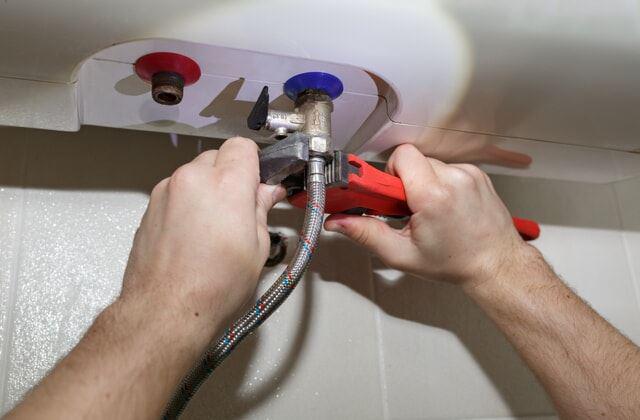Expert Tips on Maintaining Your Home's Hot Water System
Expert Tips on Maintaining Your Home's Hot Water System
Blog Article
What are your ideas regarding Water Heater Maintenance Tips You Can't Afford to Forget?

Warm water is vital for daily convenience, whether it's for a rejuvenating shower or cleaning recipes. To ensure your warm water system runs effectively and lasts longer, routine maintenance is crucial. This article gives practical pointers and insights on how to keep your home's hot water system to stay clear of disruptions and pricey repairs.
Intro
Maintaining your home's hot water system could seem overwhelming, but with a couple of easy actions, you can ensure it runs smoothly for years to find. This overview covers everything from recognizing your hot water system to do it yourself maintenance pointers and understanding when to contact professional help.
Significance of Preserving Your Warm Water System
Routine upkeep not only extends the life-span of your hot water system however also ensures it runs efficiently. Disregarding maintenance can cause lowered efficiency, greater energy expenses, and also premature failure of the system.
Indicators Your Warm Water System Needs Upkeep
Recognizing when your hot water system needs interest can protect against significant issues. Watch out for indicators such as inconsistent water temperature level, weird sounds from the heater, or rusty water.
Comprehending Your Warm Water System
Before diving into upkeep jobs, it's useful to understand the fundamental parts of your warm water system. Generally, this includes the water heater itself, pipelines, anode poles, and temperature level controls.
Monthly Maintenance Tasks
Regular regular monthly checks can aid capture minor issues before they intensify.
Purging the Hot Water Heater
Flushing your water heater eliminates sediment accumulation, boosting performance and lengthening its life.
Monitoring and Changing Anode Rods
Anode poles protect against corrosion inside the tank. Inspecting and replacing them when worn is important.
Examining and Changing Temperature Level Settings
Changing the temperature settings guarantees ideal efficiency and security.
DIY Tips for Maintenance
You can do several maintenance jobs yourself to keep your warm water system in leading problem.
Looking for Leakages
Regularly inspect pipelines and links for leaks, as these can result in water damage and higher bills.
Testing Stress Alleviation Valves
Checking the stress relief valve ensures it works correctly and protects against too much stress accumulation.
Insulating Pipes
Shielding hot water pipes decreases heat loss and can save power.
When to Call a Specialist
While DIY maintenance is advantageous, some concerns call for expert competence.
Complex Concerns Calling For Expert Assistance
Examples consist of significant leakages, electrical problems, or if your hot water heater is consistently underperforming.
Regular Expert Maintenance Conveniences
Specialist upkeep can include detailed examinations, tune-ups, and making sure compliance with safety criteria.
Final thought
Normal upkeep of your home's hot water system is essential for effectiveness, longevity, and expense savings. By complying with these tips and recognizing when to seek expert aid, you can guarantee a trusted supply of hot water without unforeseen interruptions.
How to Maintain an Instant Hot Water Heater
Before tinkering with your hot water heater, make sure that it’s not powered on. You also have to turn off the main circuit breaker and shut off the main gas line to prevent accidents. Also turn off the water valves connected to your unit to prevent water from flowing into and out of the appliance. 2. When you’re done, you have to detach the purge valves’ caps. These look like the letter “T†and are situated on either side of the water valves. Doing so will release any pressure that has accumulated inside the valves while at the same time avoid hot water from shooting out and burning your skin. 3. When the purge valves’ caps are removed, you have to connect your hosing lines to the valves. Your unit should have come with three hoses but if it didn’t, you can purchase these things from any hardware or home repair shops. You can also get them from retail stores that sell water heating systems. Read the user’s manual and follow it to complete this task properly. When the hosing lines are connected, open the purge port’s valves. 4. You should never use harsh chemical cleaners or solutions when cleaning your unit. Make use of white vinegar instead. It should be undiluted and you’ll probably use about 2 gallons. 5. Now flush your water heater. This task should probably take about 40 minutes. We can’t give you specific directions for this because the procedure is carried out depending on the type, model and brand of your heater. With that being said, refer to the user’s manual. 6. When you’re done draining the unit, you have to turn off the purge port valves again. Remove the hosing lines that you earlier installed on each of the water valves. Put the valve caps (purge port) back in their respective places and be very careful so as not to damage the rubber discs that are found inside these caps. 7. Now that everything’s back in place, check your user’s manual again to find out how to reactivate your water heating system. 8. Once it is working, turn one of your hot water faucets on just to let air pass through the heater’s water supply pipes. Leave the tap on until water flows smoothly out of it. https://www.orrplumbing.com/blog/2014/september/how-to-maintain-an-instant-hot-water-heater/

As a passionate person who reads on How to Maintain a Hot Water Heater in a Few Simple Steps, I thought sharing that excerpt was a great idea. Those who liked our blog post kindly do not forget to pass it around. We cherish your readership.
Request An Estimate Report this page